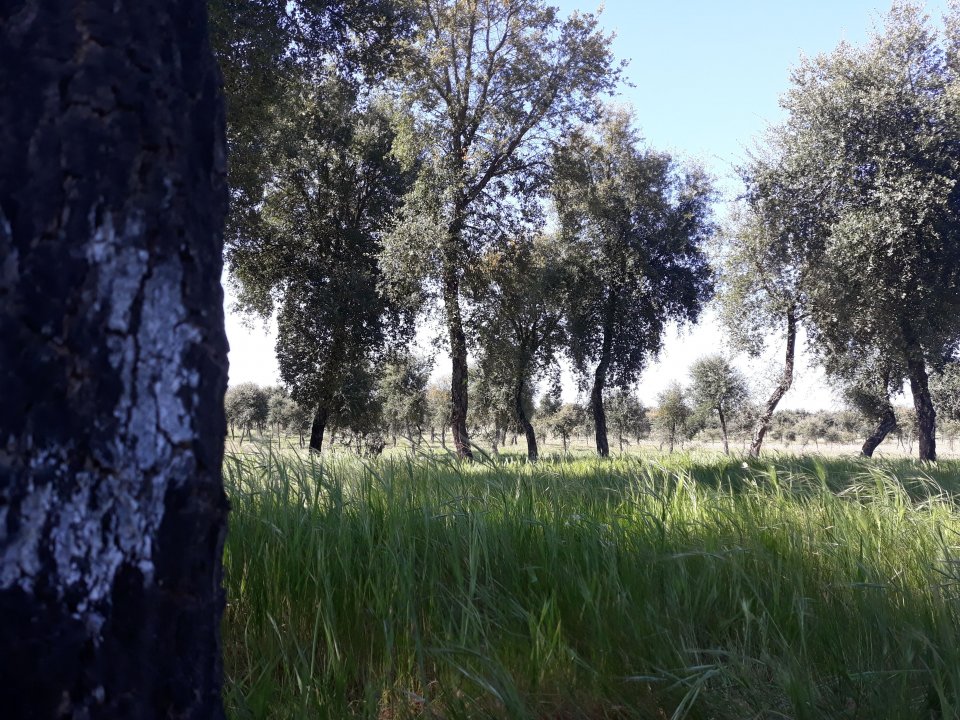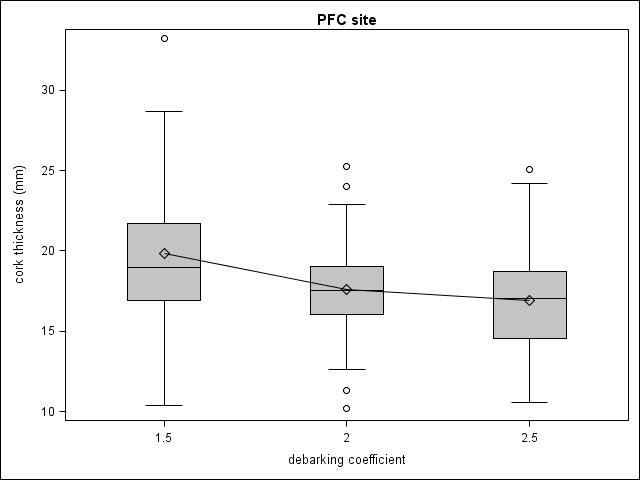
- Evaluate the influence of tree size, stand characteristics, debarking coefficients and climatic variables on cork thickness and its evolution between consecutive cork extraction operations, i.e. between successive cork growth periods (cgp). Cork growth is assessed using the cgi, defined as the radial width of the first eight complete years of cork growth after stripping.
- Assess the impact of the increase in debarking intensity on cork growth. Debarking intensity is quantified by the cork debarking coefficient – the ratio of the vertical debarking height to the perimeter at breast height, measured over cork.
Grasping how variables affect cork thickness can guide forest managers towards sustainable practices. The cork oak permanent plots network from the Forest Research Centre (ISA/CEF) across varying edaphoclimatic conditions allows assessing annual cork growth in consecutive cork extraction operations, adding to the knowledge needed for efficient decision-making, management and development of decision support tools. Two long-term experimental trials, installed in stands with high and low productivity, complement this dataset; three levels of debarking intensity at the first cork extraction are compared.
There is a linear relation between cgi values for consecutive extractions, showing differences in cork growth among individual trees over time. The cgi was positively related to precipitation levels in the cgp.
Cgi values increased with the diameter at breast height under cork, and total tree height. Stand density, for values between 87 and 334 trees per ha, did not limit cgi values.
Increasing debarking coefficients had a significant, small negative effect on secondary cork thickness in the average-low productivity class stand (Leptosoils, inland), while there was no effect in the high productivity class site (Podzols, seaside). In adult trees across the permanent plots, cgi was negatively affected by the number of debarked main branches.
With climate change, cork growth may be affected by the rising irregularity of annual precipitation and its average yearly value reduction. Cork harvesting should factor in information on the climate (mainly precipitation) of the nine previous years.
Debarking intensity should be defined during the debarking operation, considering cork thickness, sanitary assessment of the tree and site conditions. Conservative values below the legal limit are recommended for low productivity sites. The maximum legal values may be applied for others. Thus, forest managers must select trained operators provided with suitable previous formation and guidelines, followed by a close follow-up of the debarking operation on field.
The economic value of cork oak stands depends on the quantity, quality and thickness of the extracted cork. Thus, knowledge of which variables influence these outcomes and to what extent they can be applied to cork oak stands is essential for sustainable management and development of decision support tools.
The inexistence of an observed relationship between the tree stand density and cgi should be considered carefully, since the number of trees per ha on the studied plots was lower than the number commonly observed in young cork oak plantations.
Long-term research, based on permanent plot measurements and research trials, is required to support the most adequate and sustainable management activities, particularly to clarify the tree response to increasing debarking intensities, along with consecutive cork debarking operations.
The effect of stand density and its influence on tree competition should be further investigated to improve knowledge on forest operations that can contribute to economic gains for cork oak stands.
The impact of these variables in cork quality is also a field to explore.
Joana Amaral Paulo, joanaap@isa.ulisboa.pt
Margarida Tomé, magatome@isa.ulisboa.pt
Further information
Paulo, J.A., Pereira, H., Tomé, M., 2017. Analysis of variables influencing tree cork caliper in two consecutive cork extractions using cork growth index modelling. Agroforest Systems, 91: 221. https://doi.org/10.1007/s10457-016-9922-2
Paulo, J.A. and Tomé, M., 2017. Does debarking intensity during the first cork extraction affect future cork thickness? Annals of Forest Science 74: 66. https://doi.org/10.1007/s13595-017-0662-x
Joana A Paulo (2019)

Box plots of secondary cork thickness (ct) value grouped and by debarking coefficient (dcoef: 1.5; 2.0 e 2.5) value for a low productivity site. A decrease of the average and median values of ct is observed with the increase of the dcoef.
